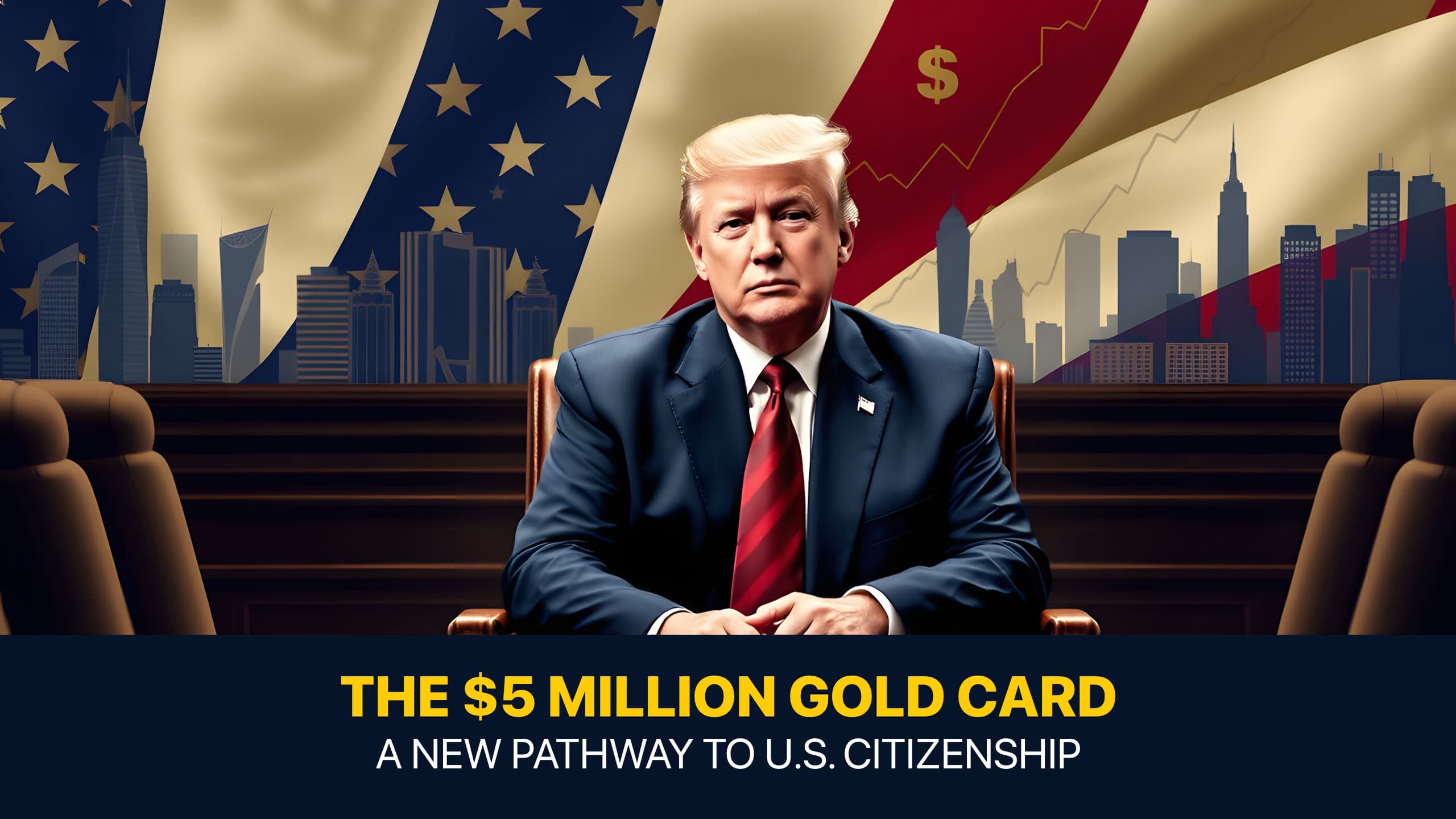Trump’s $5 Million ‘Gold Card’: A New Route to U.S. Citizenship for Wealthy Investors

In a bold move aimed at attracting wealthy foreign investors, U.S. President Donald Trump recently floated the idea of a $5 million "gold card" as a pathway to American citizenship. This proposal is part of an effort to revamp the existing visa programs for foreign investors, offering them not only green card privileges but also a clear route to obtaining U.S. citizenship. Let’s dive into what this means for potential investors and how it could reshape immigration policies in the United States.
What Is the $5 Million ‘Gold Card’?
The "gold card" is essentially a premium immigration option designed to attract affluent individuals from around the globe. According to Trump, this initiative will allow wealthy foreigners to gain residency status in the U.S., with additional benefits that set it apart from traditional green cards. For a price tag of $5 million, applicants would receive:
- Green Card Privileges: Immediate access to live, work, and study in the United States.
- Pathway to Citizenship: Unlike standard green cards, the "gold card" explicitly includes a structured process toward becoming a naturalized U.S. citizen.
This program signals a shift toward prioritizing economic contributions as a criterion for immigration, aligning with broader efforts to bolster the U.S. economy through high-net-worth individuals.
Why Introduce the ‘Gold Card’ Program?
Trump has long advocated for reforms in the U.S. immigration system, often emphasizing merit-based approaches over other methods. The introduction of the "gold card" reflects his administration's focus on attracting capital investment while ensuring that immigrants contribute significantly to the economy. By setting a $5 million threshold, the program targets ultra-high-net-worth individuals who can make substantial financial commitments to the country.
Moreover, the "gold card" aims to replace outdated visa programs, such as the EB-5 Immigrant Investor Program, which has faced criticism for inefficiencies and misuse. With stricter oversight and higher entry requirements, the new initiative seeks to streamline the process for both investors and the government.
How Does It Compare to Existing Options?
Currently, foreign investors seeking permanent residency in the U.S. often rely on the EB-5 visa program, which requires a minimum investment of $800,000 to $1.05 million in designated projects. While the EB-5 offers a path to a green card, it does not guarantee expedited citizenship or provide the same level of exclusivity as the proposed "gold card."
Key differences include:
- Higher Investment Threshold: At $5 million, the "gold card" demands a much larger upfront commitment compared to the EB-5 program.
- Direct Pathway to Citizenship: Unlike the EB-5, which focuses solely on residency, the "gold card" explicitly outlines a roadmap to full citizenship.
- Target Audience: The "gold card" caters specifically to ultra-wealthy individuals, positioning itself as an elite option within the immigration landscape.
These distinctions underscore the program's ambition to redefine how the U.S. engages with global elites.
Potential Impacts of the ‘Gold Card’ Initiative
While the "gold card" presents exciting opportunities for wealthy investors, its implementation raises several questions about equity and policy implications. Here are some potential impacts:
1. Economic Boost
By channeling billions of dollars into the U.S. economy, the "gold card" could stimulate job creation, infrastructure development, and innovation. High-net-worth individuals may also bring valuable skills and entrepreneurial ventures, further enriching the nation’s talent pool.
2. Shift in Immigration Priorities
The emphasis on wealth-based immigration marks a departure from family reunification and diversity lottery programs. Critics argue that such policies favor economic elites at the expense of less affluent immigrants, potentially widening social inequalities.
3. Global Competition for Talent
Countries like Canada and Australia already offer investor visas with similar incentives. The "gold card" positions the U.S. as a competitive player in the global race for wealthy migrants, though its success will depend on execution and international perceptions.
Donald Trump’s proposal for a $5 million "gold card" represents a significant step toward reimagining U.S. immigration policies. By targeting affluent investors, the initiative aims to drive economic growth while offering a unique pathway to citizenship. However, its long-term effects on societal dynamics and inclusivity remain uncertain.
As discussions around the "gold card" continue, stakeholders must weigh its potential benefits against ethical considerations. Will this program pave the way for a more prosperous America, or will it deepen divides in an already polarized society? Only time will tell.
For now, one thing is certain: the "gold card" has sparked a crucial conversation about the future of U.S. immigration—one that policymakers, economists, and citizens alike cannot afford to ignore.
Share this article